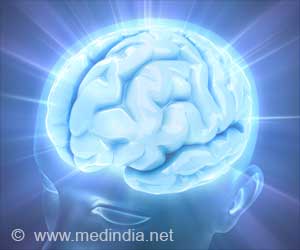Water crisis is beginning to haunt many parts of the world, rainwater harvesting could offer a way out. Water is precious and we must save every valuable drop.
Water, the Hub of Life.
Water is its mater and matrix, mother and medium.
Water is the most extraordinary substance!
Practically all its properties are anomalous, which enabled life to use it as building material for its machinery.
Life is water dancing to the tune of solids.
- Albert Szent-Gyorgyi (1972)
It is said that the future wars of this world will be fought not for land but for fresh drinking water. This looming crisis can endanger our habitat and our very existence.
Global warming also means rapid melting of water resources such as the glaciers in Himalaya’s and Antartica reserves. This is diminishing the fresh water reserves and increasing the waters of the oceans.
Without immediate action it is estimated that by 2025 two thirds of ours world’s population will have difficulty surviving in water stressed areas.
“Water water everywhere – not a drop to drink” is likely to become a reality if we continue to waste this precious resource.
To preserve life on the land - conserving and recycling water has to be urgently initiated by world bodies like WHO. Currently only cosmetic measures are being taken from time to time without there being any signs of serious intent in the near foreseeable future.
In order to conserve the remaining water sources, and to improve the availability of water, many solutions have been put forth. It is over such a backdrop that Rain Water Harvesting (RWH), as a method of conserving and improving water supply, has been attracting the attention of planners everywhere.
India, being in the tropics and receiving good spells of rain, had been a pioneer in RWH methods. Rajasthan, a rain- deficient region in the northwest, is known for its innovative tanks and ponds which are designed to conserve rain water. These include both public and private rain water harvesting systems.
But with urbanization and modernization, this tradition changed, at least in the cities, and civic authorities shifted towards engineering methods that resulted only in overexploitation.
Take the case of Chennai, capital of the southern Indian state of Tamil Nadu. It is gifted with an annual rainfall (120 cm) which is above the average rainfall in the country (80 cms). It was also a city of lakes and aquifers that recharges the ground water through the year.
But with growth, development and relentless inflow of people from the districts, vast swathes of land that could store and recharge the ground water sources have been taken over for human habitation.
And when capital intensive projects like desalination plants do not seem to offer much of a relief, inevitably the attention of the authorities turns to local, cost effective and simple solutions, like the RWH.
But for all the possible efforts and the solutions available - It is estimated that only 5% of rainwater in the city is collected and the rest is lost to the sea.
RainWater Harvesting Methods
RainWater Harvesting is a simple method of channelising all rainwater into the ground and recharging the groundwater sources, instead of allowing it to run off and drain into the sea. Some of the methods promoted include-
• Percolation Pit Method,
• Bore Well with Settlement Tank,
• Open Well Method with filter bed Sump, and
Percolation Pit with Bore Method: The infrastructure involved, especially at household level, is very minimal. The regular drain pipes in use could be connected to storage tanks after passing them through filters. Usually the filter is a three-layered pit that removes large and medium sized particles from the water. A small pit filled with blue metal, broken bricks and sand can act as an effective filter, offering a first line of protection against contamination.
In houses with a functioning well or bore well, the rain water can also be used to recharge ground water, close to the well, by making deep percolation pits that hasten the absorption of water by the sand. But the choice of the ideal type of rain water harvesting structure depends on the type of the house and the nature of the soil and other factors.
RWH was picked up first by various groups of concerned citizens and by NGOs working in water conservation. Akash Ganga, formed in 2001, set up a Rain Center, a demonstration house in Chennai.
Mr. Srinivasan, president of the Exnora Innovators Club of Adambakkam, a Chennai suburb, admits that his campaign met with indifferent response from the public, until the state government made rainwater harvesting mandatory for all types of buildings.
Since then there has been a great turn around in the water table, he says, but feels that there is still not enough awareness.
“Even today I am sure the compliance is less than 20%. In a majority of cases, RWH structures installed don’t work. They have been set up only to avoid being penalized,” says a convinced Srinivasan.
Those who set up these a fake system cite technical difficulties and the costs involved, in their defence.
Yet others were concerned with the quality of runoff water and the efficacy of the filters in removing dirt.
But Srinivasan is quick to point out, “Even if the water is allowed to flow freely and not channelized into a storage tank, such contingencies could arise, isn’t it? RWH seeks to minimize losses due to runoff or evaporation, that’s all” All the same, he hastened to add, the water must be boiled before use for drinking.
Meanwhile in Mumbai, India’s commercial metropolis, the Chhatrapati Shivaji Maharaj Vastu Sangrahalaya, formerly the Prince of Wales Museum, is taking to rainwater harvesting.
Experts carrying out restoration work at the museum discovered that the steady seepage of rainwater over the years had caused the plinth to weaken. Conservation architect Abha Narain Lambah recommended rainwater harvesting as an option.
"This is a modern adaptation of a technique that was used by the ancient inhabitants of Dholavira in the Rann of Kutch around 3,200 years ago," said museum director Sabyasachi Mukherjee who visited Dholavira to study the ruins.
But serious questions have been raised over the long term effects of rain water harvesting. T.N Narasimham, a professor at university of California, Berkley, argues.
“Undue interception and storage of rainfall over large areas can significantly affect stream flows, leading to reduced transport of sediments and nutrients, destruction of habitats, and reduction of groundwater recharge. In short, intensive rain harvesting over large areas can significantly disrupt the hydrological cycle. It is this potential for serious disruption of the hydrological cycle that needs to be borne in mind as governmental and non-governmental agencies vigorously pursue rain-harvesting with best intentions of ameliorating the water crisis.”
Long Term Solutions
Long-term plans for integrated water development through. Carefully chosen watersheds of suitable sizes must be developed. Based on appropriate parameters a water budget would help evaluate the overall water availability over these watersheds.
Water management needs to be guided by local, beliefs, traditions, and institutions. This amalgamation of science and human values, presents an extraordinary situation of challenges and unprecedented opportunities for shared living in an ambiance of limited resources.
Water, as a natural resource, should be treated as the property of the community. But RWH only reinforces the former notion of private control. This has been exploited by industries, particularly soft drinks and packaged water suppliers who own large tracts of land and are able to lay claim to huge volumes of the rainwater that would other wise have fulfilled the drinking water needs of whole communities.
Besides, while RWH is a laudable idea, it is also imperative that the state governments and state agencies take serious efforts to restore the natural aquifers as part of long term water conservation.
Only a multi- pronged approach that involves the communities not merely in conserving, but also in auditing, management and distributing water can ensure that water, the greatest gift of nature to life on earth, is preserved for future generations. Jacques Cousteau put it rightly when he said – ‘We forget that the water cycle and the life cycle are one.’
Source-Medindia
VENKAT/L








